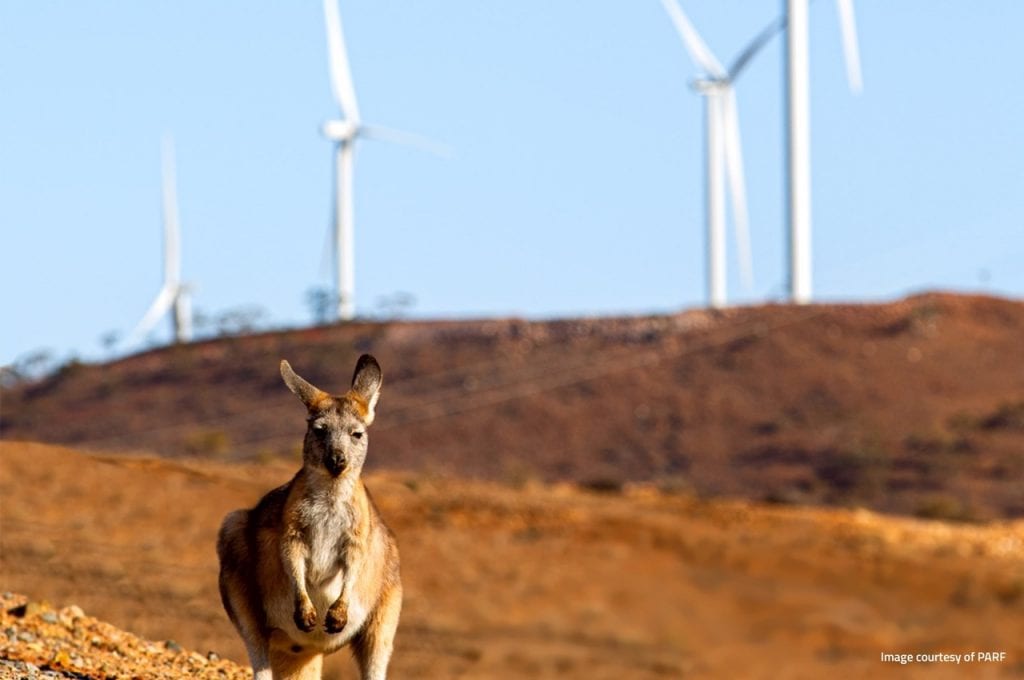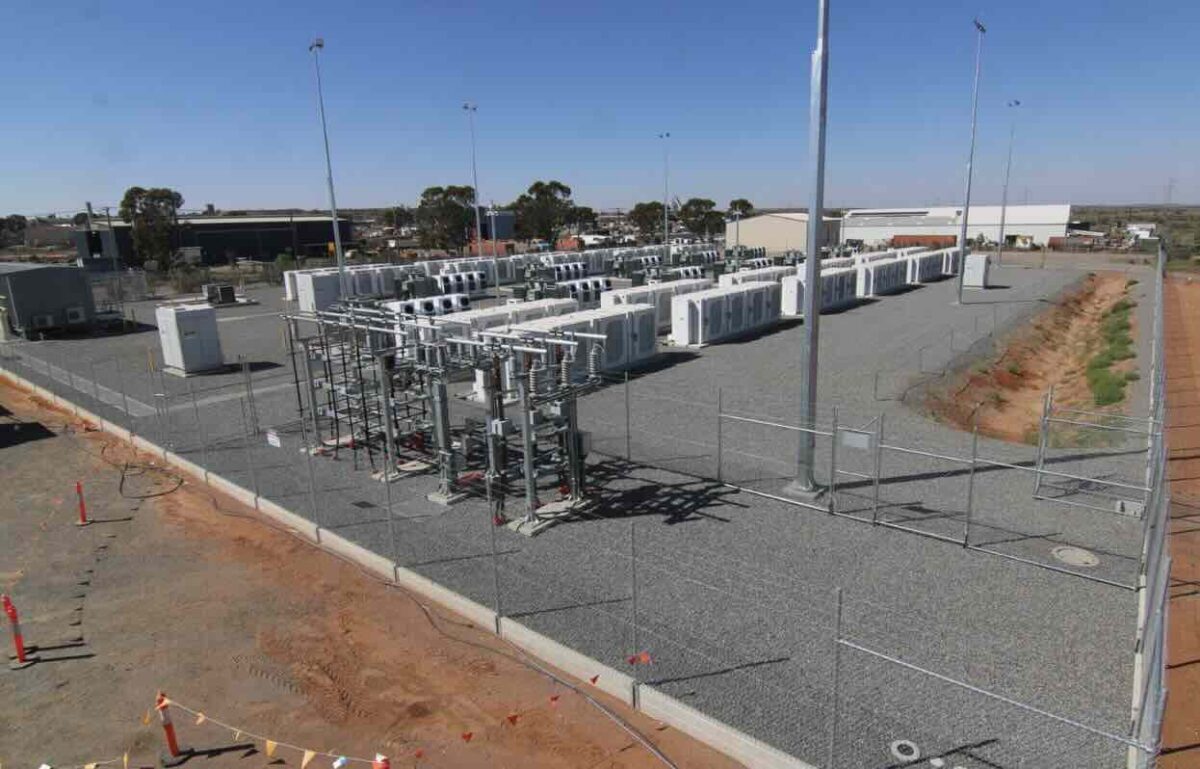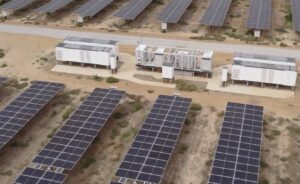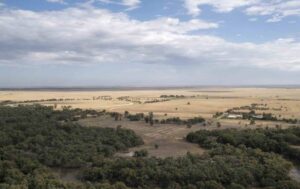Update: Less than 24 hours after we published this story, it was announced that agreement has been reached to actually turn the battery on in island mode. You can read more here: Agreement finally reached to switch on Broken Hill battery, 10 days after storm blows down power lines
Did anyone know that Broken Hill has a big battery? The 50 MW, 50 MWh facility at Pinnacles Place on the outskirts of the town has a pretty clear sign on the box, or at least on its website: “The Project will support the reliable supply of electricity to Broken Hill in the event of line failure and provide efficient grid support for the region,” it says.
That’s probably news to the people of Broken Hill right now.
Nearly a week after a storm tore down seven transmission towers, and isolated the region from the rest of the grid, locals are still struggling with repeated power outages.
The line failed, but the battery has not kicked in. And the local diesel generators that are supposed to be on standby failed to deliver, one is broken and the other is dodgy. It tripped again overnight, this time due to a fuel pump problem.
Broken Hill doesn’t just have a big battery, it also has the nearby 200 MW Silverton wind farm and the 53 MW Broken Hill solar farm. And they are all looking pretty useless at the moment with the transmission lines down. But getting an answer as to exactly why is not proving easy.
The fact that the wind farm and the solar farm aren’t operating with the transmission line is understandable. But the big battery is supposed to be – and that could in turn have allowed the wind and solar to produce. No one is saying what’s gone wrong, but many suspect it’s a matter of oversight rather than technology.
“You need to talk to Transgrid,” said one. “You should talk to Essential,” says another. “Ah, that’s AGL’s asset, you better talk to them.” And then. “No, Tilt Renewables own those. Give them a ring.” And finally, “we don’t have an official statement now, but we are trying to sort it.”
Just to be clear, Transgrid is the operator of the transmission network, which owns the towers that were destroyed by the storms and also has responsibility for the diesel generators that are supposed to provide back-up power in such an event.
Essential Energy is the operator of the distribution, or, local, electricity network, while the battery is owned by AGL, and the wind and solar farms by Tilt Renewables, which is partly owned by AGL.
It is going to be a regulator’s delight getting to the bottom of what happened and why, and who did or didn’t do what, and what was or wasn’t in good working order and capable of doing the things they were supposed to do.
There can be some very simple engineering explanations too about why it wasn’t possible to harness those assets and to keep the lights on. There is more than enough capacity in those assets to do the job, but why they didn’t or couldn’t will be questions that need to be answered.
What we do know is that Broken Hill is struggling with power. One of the diesel generators is offline and the other keeps tripping.
Rooftop PV has helped meet some of the demand during the day, but the single operating generator is reportedly not big enough to meet the evening demand, and households have been asked to switch off pool pumps and anything else not needed in the evening.
Local are justifiably outraged, and it has become a political embarrassment for the Minns Labor government, and accusations have been thrown around about the maintenance of the diesel generators.
Essential Energy says it has successfully “islanded” the nearby towns such as Menindee, Sunset Strip, Kinalung, Wilcannia, White Cliffs, and others from the rest of the already islanded regional grid at the Pinnacles Place sub station.
That means it is now delivering power to those communities through portable generators, although they are also struggling with the ramp up and down of rooftop solar.
A spokesperson said one of the mine sites was seeking to absorb some of the rooftop solar output to keep the output as steady as possible (diesel generators do not like variability). One mine told Renew Economy it had absorbed 4.5 MW of rooftop solar to help maintain grid stability.
But what about Broken Hill. And what about all those other big assets?

Tilt says the wind and solar farms it owns are not damaged and are “ready to generate” once the transmission lines are repaired. At the moment, they are not allowed to do so under the generator performance standards they are obliged to follow.
“Tilt Renewables acknowledges the difficult time the community of Broken Hill, Silverton and the broader region are going through with this outage,” it said in a statement to Renew Economy.
“The generator performance standards for both the wind farm and solar plant prevent generation when Broken Hill has been islanded from the national electricity network
“Both our power stations, Silverton Wind Farm and Broken Hill Solar Plant, are undamaged and are ready to generate electricity once the transmission network is back up and running. We are working with Transgrid to do this as quickly and as safely as possible.”
Tilt says it has organised generators for vulnerable households through the Silverton Village Committee and the Broken Hill Local Area Land Council. “We have also provided Lifeline with a generator so they can continue to provide essential support during this time.”
But what about the battery? Isn’t that what it is supposed to be doing in the meantime? It is located at Pinnacles Place, right next to the substation, so why wasn’t it supporting the local power generators, even the rooftop solar?
Essential Energy says the battery is no use to them and the explanation offered by its spokespeople is that is because it is connected to the transmission network, not the local network that they look after.
The Broken Hill battery has been partly funded by the Australian Renewable Energy Agency to include so-called “grid forming inverters”. This was decided because Broken Hill is at the end of a weak part of the grid, and this was having an impact on solar and wind farms hundreds of kilometres away because of a lack of “system strength.”
The battery’s “knowledge sharing” report some of the many issues encountered while testing and commissioning the battery, and the battery was delayed as it worked through various issues.
But the AGL website makes clear the battery – commissioned a few months ago after lengthy delays, partly caused by issues surrounding the IP of the technology provided by Fluence – is also intended to provide local back-up when the transmission lines are down. Clearly, that has not happened.
And the reasons for that could be embarrassing to someone. And some in the industry say it could serve to underline the frustrations that many technology suppliers and project developers have when it comes to the connection, modelling and commissioning process.
Was the technology not ready, or was it not capable? Was there some regulatory or operating constraint that stopped it doing what it was supposed to be doing? Did they not know how to use it because of the IP issues? Was it just bad luck?
Renew Economy reached out to both Transgrid and AGL to find out more about the big battery, and what it was and wasn’t doing, and why. But by the time of publication, we did not receive an on the record answer. “We’re talking with each other,” is the best we got.
The people of Broken Hill will be hoping that the next time a storm tears down transmission lines, either the battery is doing what it is supposed to do, or that the proposed replacement for the diesel generators, a world-leading compressed air storage facility to be built in a disused cavern in one of the region’s famous silver mines, will be up and operating, and also doing what it says on the box.
That project, using technology from Canada-based Hydrostor, will be sized at 200 MW and 1600 MWh and promises also to be able to provide back up power to the town and surrounding regions, where it could operate as a giant micro-grid if the transmission lines to the rest of the network goes down.
The fear is that the situation will lead to some knee-jerk reactions from politicians – such as installing more diesel generators – because that is what they tend to do in response to headlines and a crisis.
The hope is that it could be used to galvanise the responsible authorities, in particular the regulators, market operator and the network providers, to further streamline the connection and commissioning processes. And to make sure things work.
There is a lot at stake in the rapidly accelerating green energy transition, and a deepening political divide over whether it is possible, and if the lights will go out as a result. So, when the lights do go out, and technology and/or responsible entities fail to deliver the services as promised, it requires an explanation, and a measured response.
Update: Transgrid said in a later update that the diesel generator had tripped again due to a fault at 2.30am, but it is now back on line, and specialist crews are now seeking to replace its fuel forwarding pump.
it saidemergency repairs to the transmission line that provides permanent supply to the area are progressing well, with more than 60 personnel now on site, working around the clock. Crews have assembled seven temporary towers on the ground and are establishing structure foundations. Towers will then be erected before cabling gets underway.
It said the transmission line remains on track to return to service on Wednesday, 6 November. There was no mention of the battery.
Note: We have corrected size of the battery to 50 MWh after noting an error on the AGL website.
Further updated: Update: Less than 24 hours after we published this story, it was announced that agreement has been reached to actually turn the battery on in island mode. You can read more here: Agreement finally reached to switch on Broken Hill battery, 10 days after storm blows down power lines








